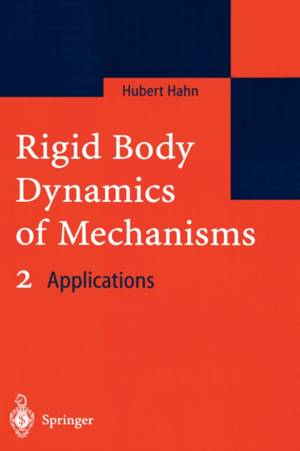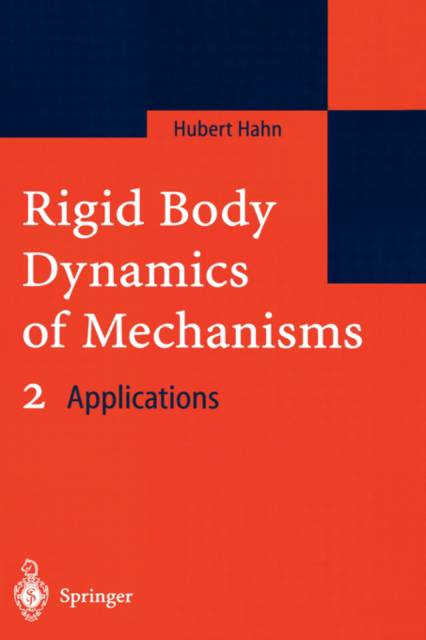
- Afhalen na 1 uur in een winkel met voorraad
- Gratis thuislevering in België vanaf € 30
- Ruim aanbod met 7 miljoen producten
- Afhalen na 1 uur in een winkel met voorraad
- Gratis thuislevering in België vanaf € 30
- Ruim aanbod met 7 miljoen producten
Zoeken
€ 348,45
+ 696 punten
Uitvoering
Omschrijving
The dynamics of mechanical rigid-body systems is a highly developed disci- pline. The model equations that apply to the tremendous variety of appli- cations of rigid-body systems in industrial practice are based on just a few basic laws of, for example, Newton, Euler, or Lagrange. These basic laws can be written in an extreme compact, symmetrical, and esthetic form, simple enough to be easily learned and kept in mind by students and engineers not only from the area of mechanics, but also from other disciplines like physics, mathematics, or even control, hydraulics, and electronics. This latter aspect is of immense practical importance since mechanisms, machines, robots, and ve- hicles in modern industrial practice (sometimes called mechatronic systems) usually include various subsystems from the areas of hydraulics, electronics, pneumatics, and control and are built by engineers which are trained in quite different disciplines. Objectives of this monograph This Volume presents a systematic approach for deriving model equations of many planar and spatial mechanisms: 1. As a first step in DAE form along the systematic approach of Volume I. 2. As a second step in symbolic DE form, as nonlinear and linear state-space equations, andin transfer-function form. The objectives of both the theoretical discussions (Volume I) and the practical applications (this volume) are (see Table 1. 1 of Chapter 1, Volume I): 1. To prepare the reader for efficiently handling and applications of general- purpose rigid-body programs to complex mechanisms.
Specificaties
Betrokkenen
- Auteur(s):
- Uitgeverij:
Inhoud
- Aantal bladzijden:
- 665
- Taal:
- Engels
Eigenschappen
- Productcode (EAN):
- 9783540022374
- Verschijningsdatum:
- 1/07/2003
- Uitvoering:
- Hardcover
- Formaat:
- Genaaid
- Afmetingen:
- 156 mm x 234 mm
- Gewicht:
- 1129 g

Alleen bij Standaard Boekhandel
+ 696 punten op je klantenkaart van Standaard Boekhandel
Beoordelingen
We publiceren alleen reviews die voldoen aan de voorwaarden voor reviews. Bekijk onze voorwaarden voor reviews.











